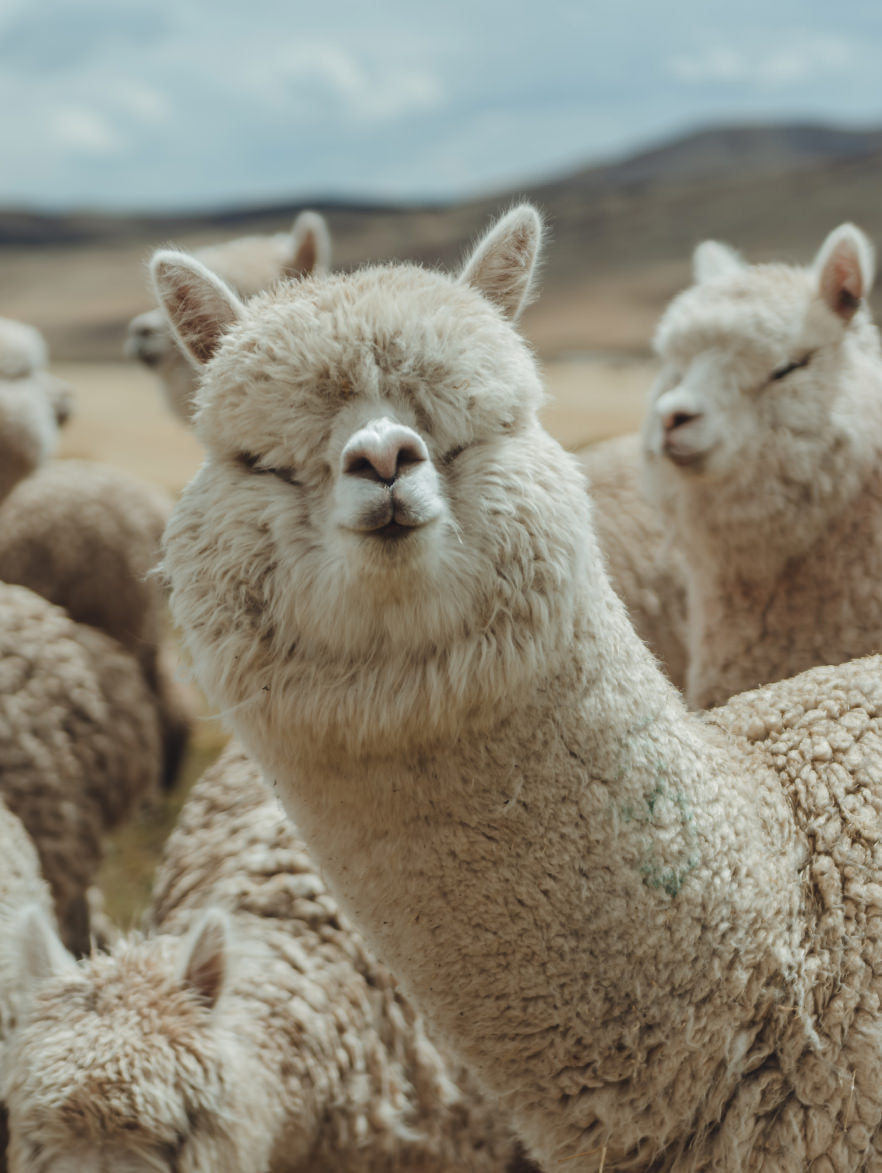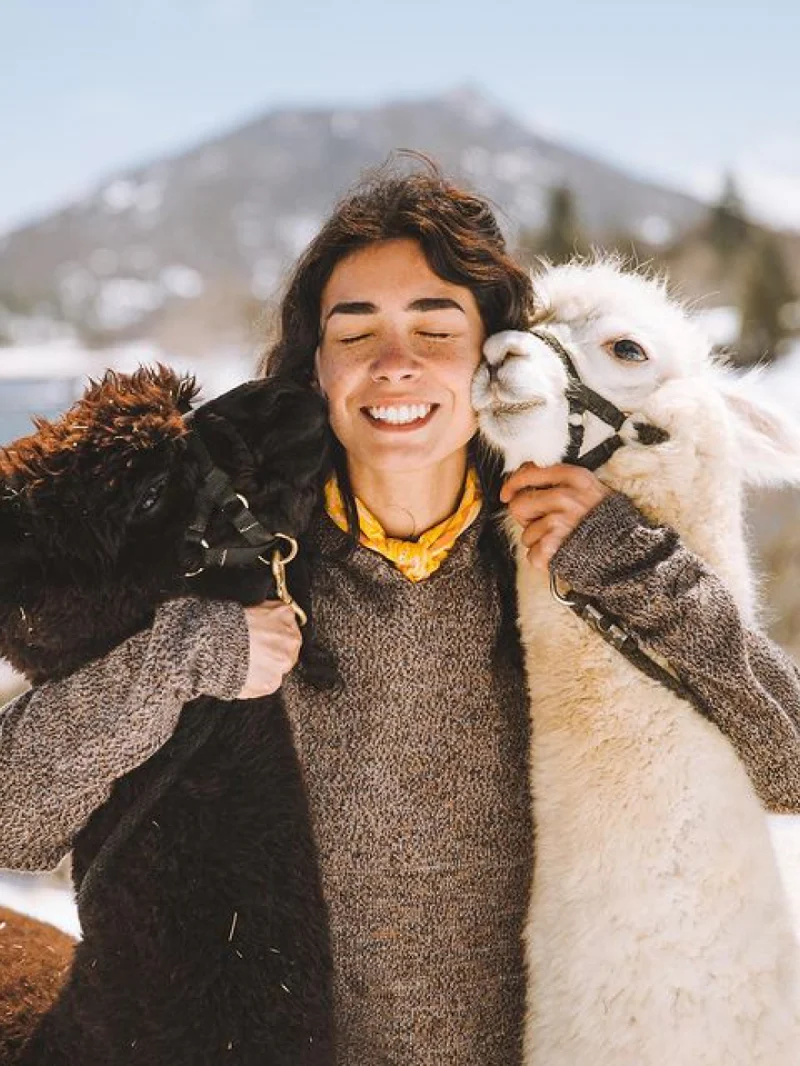



Not unlike humans, cats, and dogs, alpacas have hair on their body that grows and changes over time. This hair, more commonly referred to as alpaca fiber or fleece, protects the animal from the elements as it roams the Peruvian highlands. But while our hair turns gray and thins, alpaca fiber merely grows thicker.
To most of us, the width of a piece of hair doesn’t sound all that important. So, it would probably come as a surprise to learn that the diameter of a piece of alpaca hair means everything. In fact, it’s what we use to measure the quality and softness of the fiber, and how we intend to use it in the real world. You can think of these miniscule measurements as alpaca fiber grades.




Fiber Under The Microscope
Remember how we poked fun at you and your nonexistent microscope earlier? Well, it turns out we’ll need that microscope to better understand the intricacies of alpaca fiber.

Alpaca fiber changes over time, growing thicker as the animal ages. Much like your hair, some alpaca fibers age faster than others, and so an alpaca will have fibers of varying widths all over its body. When the time comes to shear an alpaca — approximately once per year to keep them healthy and cool throughout summer —we sort the fiber into one of six different grades based on its width, measured in microns. And that’s where the magic happens.




Helping Hands
In many ways, the alpaca industry in Peru hasn’t adopted modern methods of livestock farming. It’s what makes alpaca farming so unique and sustainable (alpacas still roam free in the Andes Mountains of Peru!). That’s why we don’t actually rely on microscopes or magnifiers when the time comes to sort alpaca fiber by its thickness. We only rely on a set of trained hands.
You see, after the alpaca fiber has been shorn, it’s bundled separately by color. From there, sorters run the fiber through their hands and grade its fineness on a 6-point scale—they do it all by touch.
Amazingly, these small variables in width can only be detected by Peruvian women, trained with years of experience.
Peruvian women learn to sort alpaca fiber from a young age, but don’t begin sorting fiber until the age of 18. Men, meanwhile, aren’t allowed to sort alpaca fiber.
Microns Matter
To better understand how we use alpaca fiber, we need to take a closer look at each fiber’s width in microns. The thinnest fibers are classified as Royal Alpaca, followed by Baby Alpaca, FS Alpaca, MP Alpaca, Huarizo Alpaca, and Coarse Alpaca (these represent the six different grades). If you really want to know how important the fiber grade is, just know that only 11 microns—or 0.00043 inches—separates the finest fiber grade from the thickest.
When the time comes to put alpaca fiber to use, the Royal and Baby Alpaca fibers cost more than the rest, as they’re the rarest fibers available. It’s worth noting these aren’t actually fibers taken from babies! This term simply denotes the softest, finest fibers available, and for that reason, they’re often used in high-end garments, along with most of the adventure-ready goods made by Paka. Meanwhile, some companies use FS Alpaca as an affordable fleece fabric for socks, baselayers, and sweaters, and the coarser fibers wind up in furniture. Because the alpaca is such an incredibly sustainable animal, we can repeat this process over and over again each year without harming the animal or its habitat.




When all is said and done, that Paka sweater you love wearing so much went through many hands to get here—literally. It was made with soft, versatile fibers that are ready for just about anything. It doesn’t hurt that all those fibers look pretty good when you make ‘em into clothes.




Know Your Roots
The methods we use to sort and separate alpaca fiber aren’t just part of a process—they’re part of a tradition. From the farmers that follow the alpacas across the Peruvian highlands, tending to their needs, to the women sorting the fiber by hand, much of alpaca production remains unchanged over the course of centuries. And in that way, we can support the alpaca, the people of Peru, and the long-established culture of the region.

Join the herd.
We grant our community private access to new products and exclusive offers.









